Thai Massaman Curry with Beef
Published Feb 27, 2020•Updated Apr 15, 2024
This post may contain affiliate links. Please read our disclosure policy.
Thai Massaman Curry has its roots in India so in addition to the usual Thai suspects like coconut milk, lemongrass, and galangal, it is fragrant with cardamom, cinnamon, and cloves. This curry is rich in flavor, mild in spice, and loaded with tender cubes of beef. It’s a one pan, easy weeknight meal.
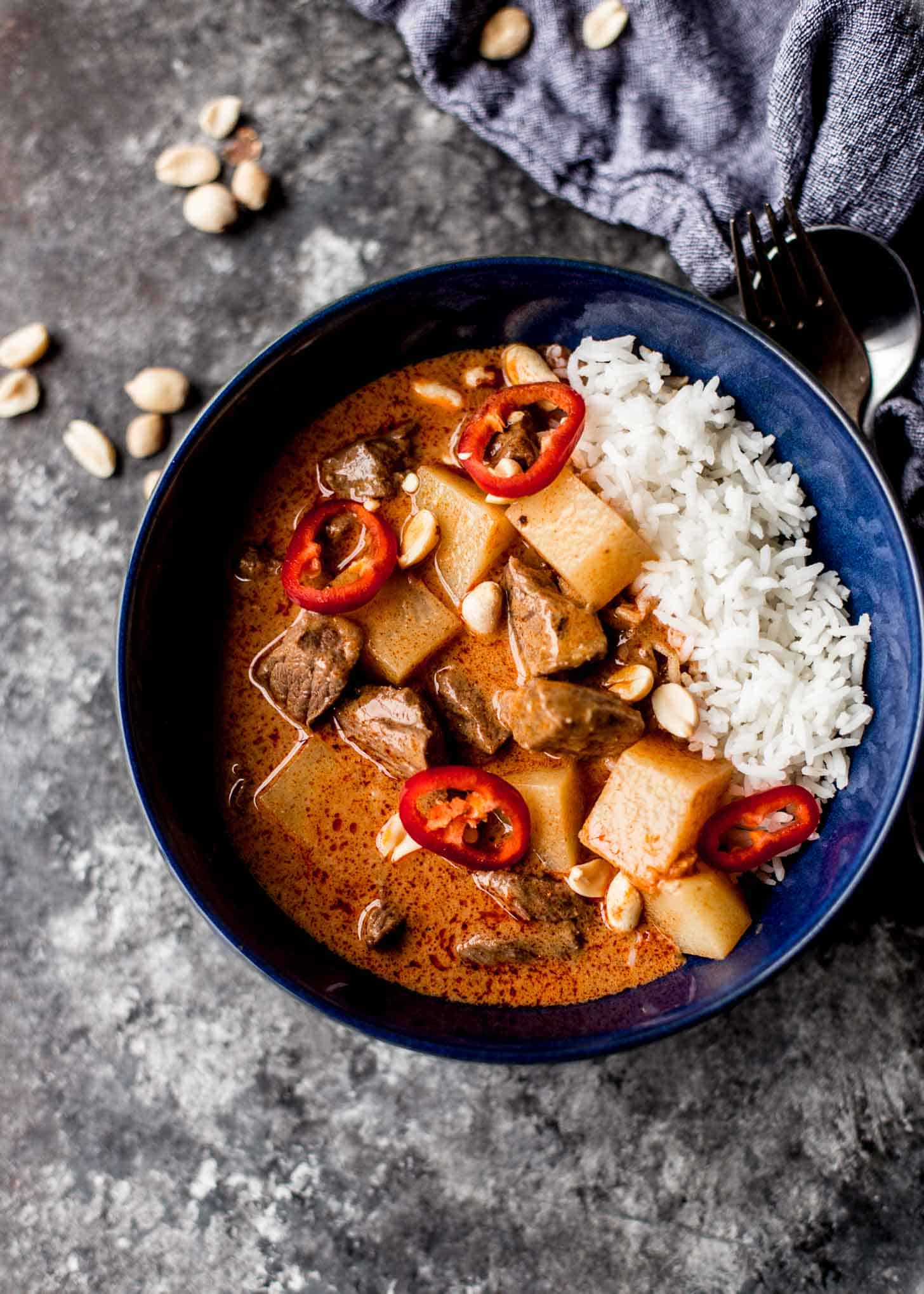
My first taste of Massaman curry was a revelation. Sure, many people outside of Thailand have tried Green Thai Curry or Red Thai Curry, but Thai Massaman Curry has its own unique thing going. This curry has a creamy coconut milk base but it is packed with dried spices that give it a savory-sweet combination of flavors.
A few years back, CNN Travel named Massaman Curry the most delicious food in the world. What more reason could you need to run out and make this tonight?
Let’s make this delicious dish!

Ingredients in Thai Massaman Curry
- Coconut Milk – Use regular (not light) coconut milk. You’ll use some of the coconut milk to cook the curry paste in at the beginning and some will be added later to simmer all of the ingredients together.
- Thai Massaman Curry Paste – This firm, dark reddish-brown paste gives the curry all the flavor it needs. You can use store-bought or homemade curry paste (see below for details).
- Beef – Boneless beef chuck roast works well in this curry. The flavor of the beef stands up well to the rich flavor of the curry. Look for chuck roast that has some lines of fat running through it as this fattier meat will be the most tender. Beef stew meat is an inexpensive and easy substitute, but be very careful not to let the curry boil as this will cause the meat to turn tough.
- Potatoes – Potatoes are a classic addition to Massaman Curry. As they simmer in the rich broth, they soak up all of its flavor. If you can find white sweet potatoes, these are a great fit, but Yukon gold potatoes go well here too.
- Tamarind Concentrate (or Tamarind Paste) – This sweet and sour liquid is pressed from the tamarind fruit and should contain no other ingredients besides tamarind. You can find it at the international or Asian grocery store (it’s common in many cuisines – Mexican, Indian, and Thai). You can also make your own tamarind paste.
- Palm Sugar – This is a lightly sweet, subtly citrus sugar that comes from coconut palm or sugar palm trees. It is sold in small dried cakes. It is easiest to measure if it is grated or soaked in a small amount of warm water for about 10 minutes until soft. Light brown sugar will work as a substitute in this curry.
- Fish Sauce – Fish sauce provides the authentic flavor of a true Thai Massaman Curry. It adds a savory umami richness that rounds out the dish. If you’re making a vegetarian version, soy sauce can be used as a substitute.
Pin this now to save it for later
Pin It Now
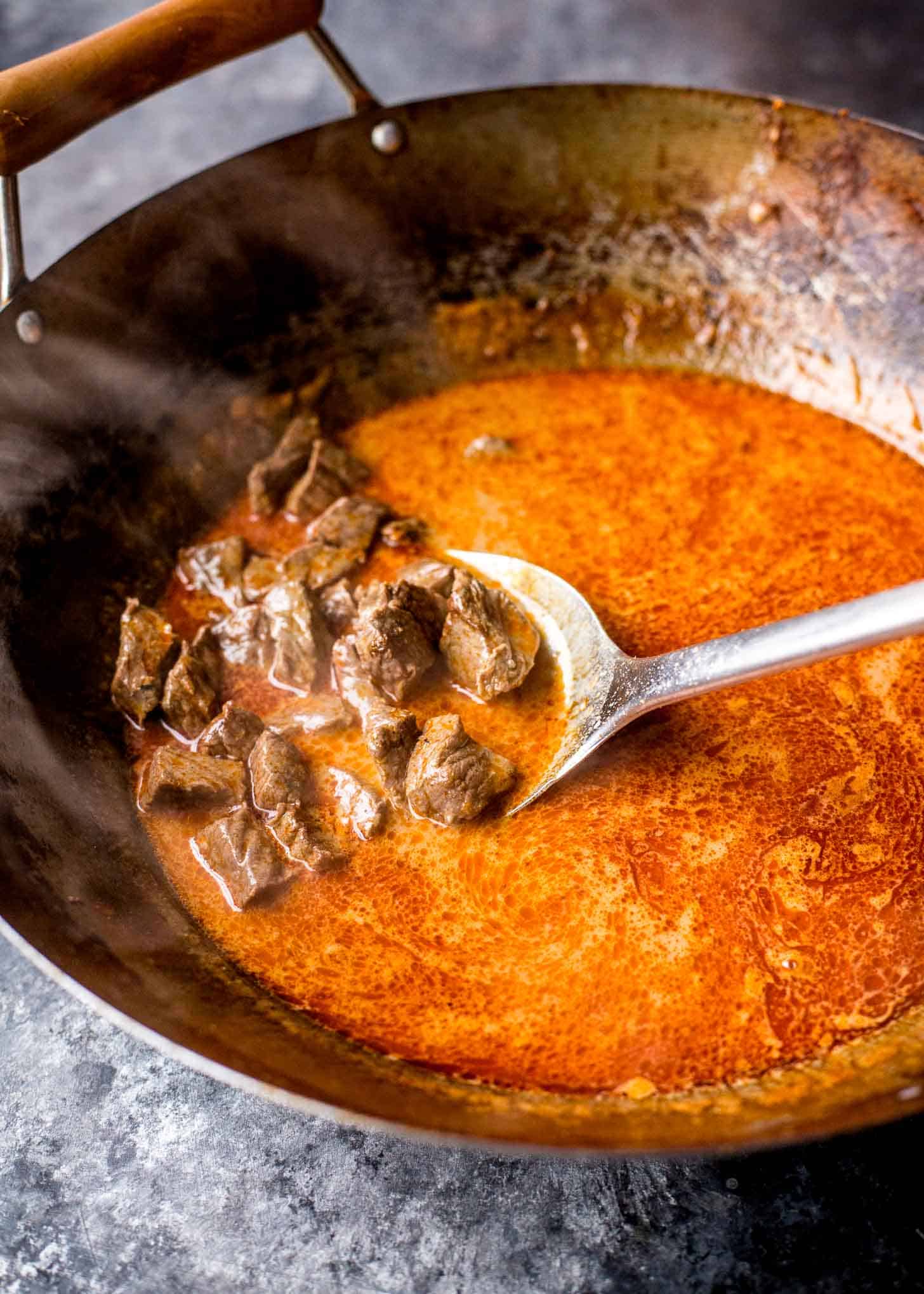
How to Make Thai Massaman Curry Paste
The steps for making Thai Massaman Curry Paste are:
- Soak dried red chili peppers
- Roast shrimp paste
- Toast dry spices in a skillet or wok
- Grind dry spices in a mortar and pestle
- Combine chilis, dry spices, and shrimp paste in a mortar and pestle, blender, or food processor and blend until smooth
Note: The easiest way to roast the shrimp paste is to wrap it in foil and fully enclose it. Then place the packet of shrimp paste on a hot skillet and cook on both sides until fragrant, 2 to 3 minutes on each side. This helps to release the flavors.
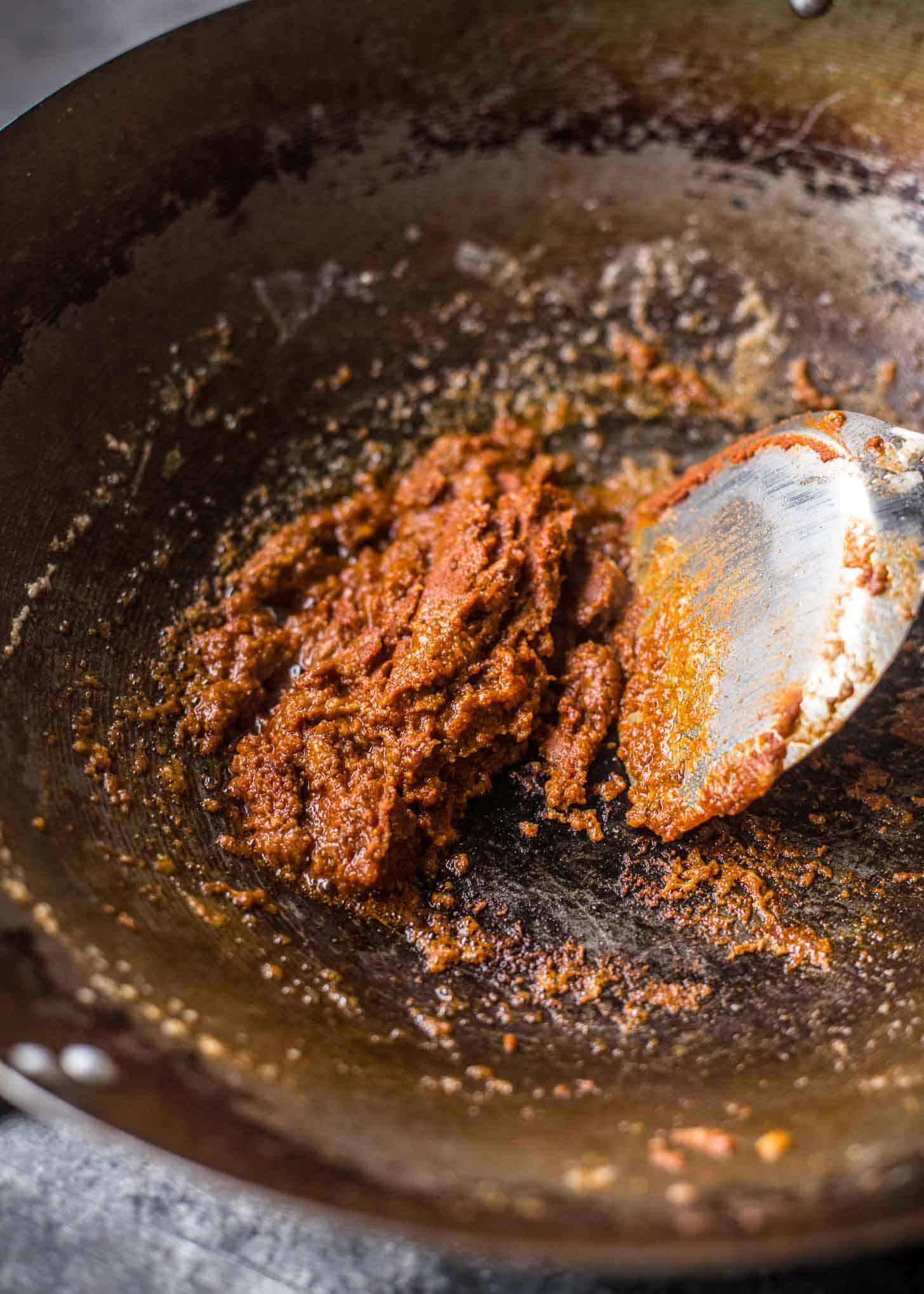
Ingredients for Thai Massaman Curry Paste
The ingredients for Thai Massaman Curry Paste are:
- Dried Red Chili Peppers
- Shrimp Paste
- Coriander Seeds
- Cumin Seeds
- White Peppercorns
- Lemongrass
- Galangal
- Shallots
- Garlic
- Cilantro Root
- Ground Cinnamon
- Ground Cloves
- Ground Cardamom
- Salt
If shopping outside of Thailand, lemongrass stalks are available at well-stocked or specialty grocery stores. Galangal and cilantro roots (you’re looking for the actual root of the herb, but can use the stems if needed; do not use cilantro leaves) are often sold frozen at Asian or international grocery stores. The frozen versions work very well if fresh are not available.
Generally speaking, the smaller the dried chili peppers, the more spicy they are. To make your own Massaman Curry Paste, use dried chili peppers that are about 6 to 8 inches in length. These are easy to work with and are more mild than the very small Thai Bird’s Eye Chilis. The nice thing about starting with more mild chili peppers is that you can always use red pepper flakes to add more spice to the curry paste. Outside of Thailand, the larger chilis that you want to use are typically from North America and are labeled “California Chilis”, “Southwestern Chilis”, or “New Mexico Chilis”. I actually get them from a Mexican grocery store.
For more information on all of the ingredients needed for Thai Curry Paste, check out the Guide to Essential Thai Ingredients.
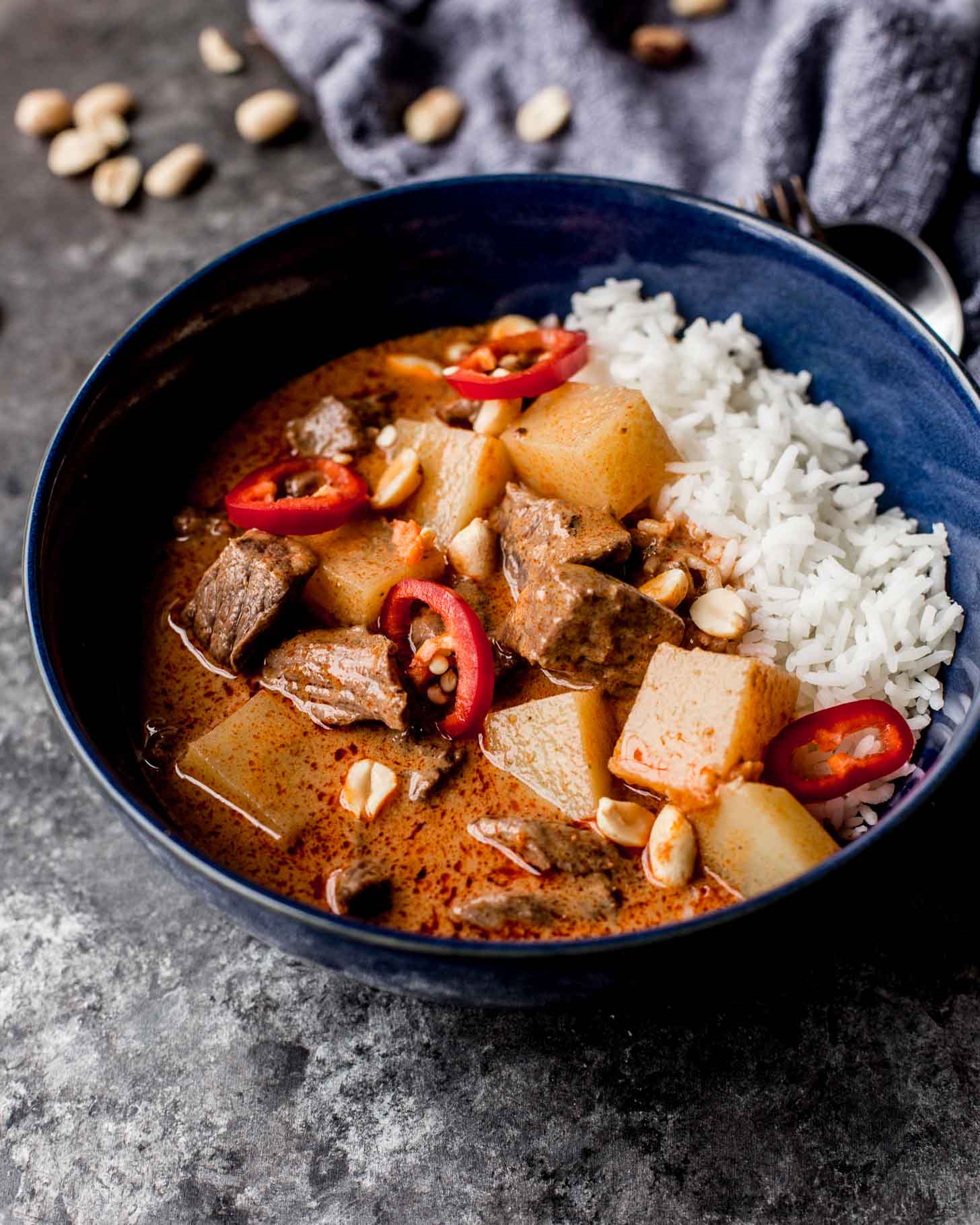
Store-Bought vs. Homemade Massaman Curry Paste
While it can be rewarding and delicious to make your own Massaman Curry Paste, if you’re just starting to explore Thai curry, store-bought curry paste makes the process a breeze. Many commercial versions of Thai curry paste are very good and will give you an excellent curry. The most common variety of Massaman Curry Paste I use is Mae Ploy. It has a vibrant flavor and a rich, thick texture. It’s worth buying this 14-oz tub which can be stored in the fridge for several weeks and is also great in Creamy Thai Peanut Sauce.
I do make my own Massaman Curry Paste occasionally and love the vibrant flavor. Mine usually has a slightly lighter color than store-bought which is a deep reddish-brown.

What is the Oil on top of Thai Curry?
People visiting Thailand often comment that the curries look oily or greasy. However, beads of oil on the surface of a curry are a sign that what you are about to eat is legit. Every authentic recipe for Thai curry starts with “breaking” the coconut milk. This step of simmering coconut milk in a dry, hot pan separates out the natural oils in the coconut milk and provides a base for cooking the curry paste that will maximize its natural flavor.
Below is what the coconut milk starts to look like as it is breaking. If you are making Thai curry and the coconut milk does not break within the first 5 minutes of cooking, don’t worry! Just proceed with the recipe as written. You’ll still get a delicious curry.
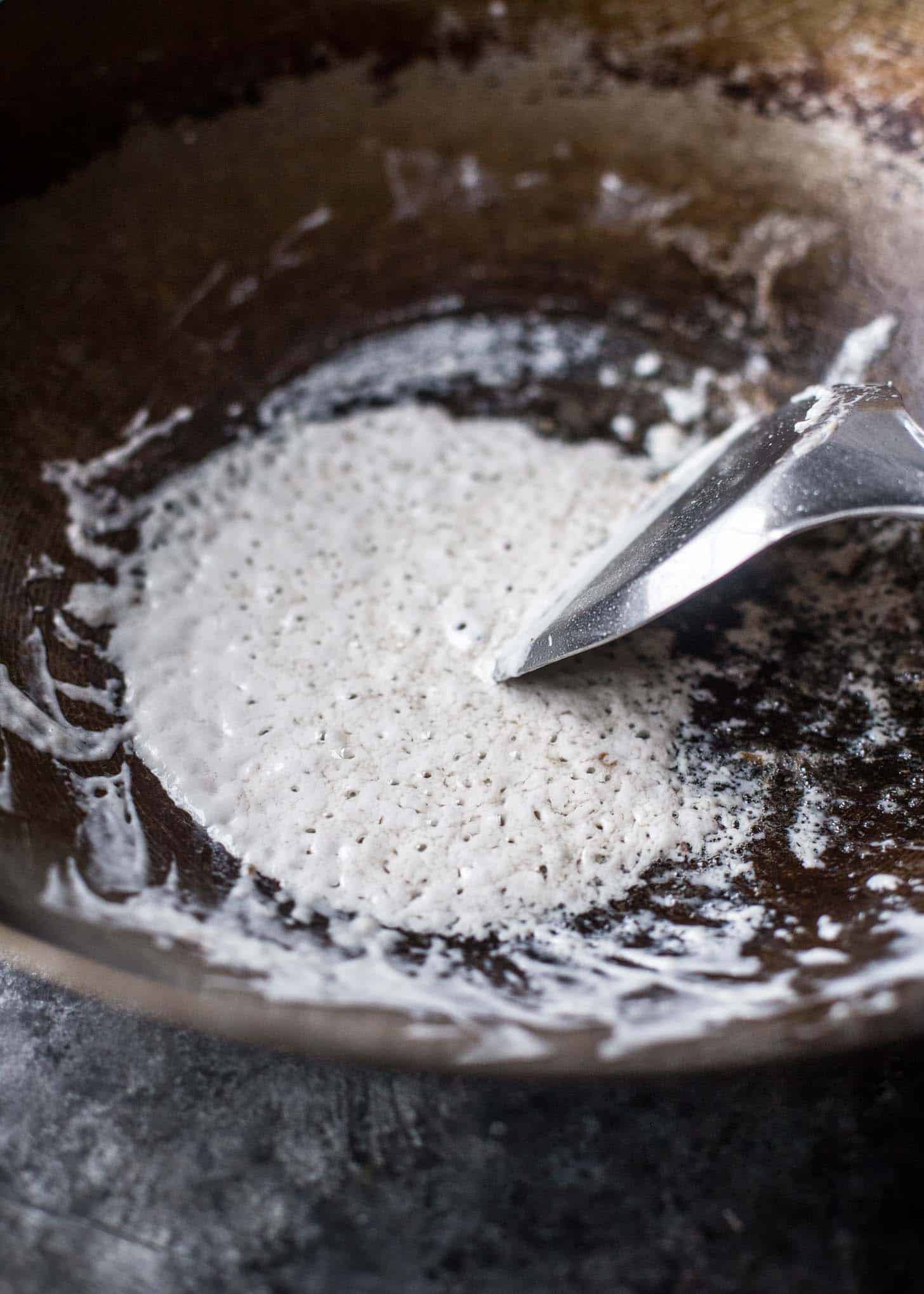
More Easy Thai Recipes
Favorite Tools
Pin this now to save it for later
Pin It Now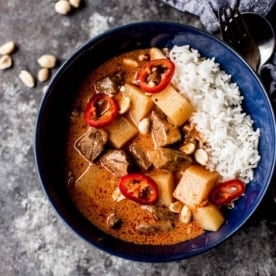
Thai Massaman Curry with Beef (Kaeng Massaman)
Equipment
- Dutch oven, wok or saute pan
- Spice Grinder or Mortar and Pestle
Ingredients
- 1 3/4 cup Coconut Milk, divided
- 4 Tablespoons Thai Massaman Curry Paste (see note)
- 1 pound Boneless Beef Chuck Roast, cubed
- 2 cups Water
- 1 pound Potatoes, cubed (I use white sweet potato or Yukon gold potatoes)
- 2 Tablespoons Tamarind Concentrate or Paste
- 1 1/2 Tablespoons Palm Sugar (see note)
- 1 1/2 Tablespoons Fish Sauce
- 1/4 cup Roasted Peanuts
- Thai Jasmine Rice, for serving
- Thinly sliced Red Jalapeños, for garnish (optional)
Instructions
- Heat a Dutch oven, wok, or saute pan over medium heat. Add ¾ cup coconut milk (if using canned coconut milk that has separated, use the top, thicker portion of the milk) to the pan. Simmer coconut milk, stirring constantly, until it has reduced by half and you can see oil separating from the milk, 5 to 6 minutes. (Note: This step to “break” the coconut milk is part of the traditional process, but don’t worry if your coconut milk doesn’t show signs of separating after this initial cook time – just proceed with the recipe.)
- Add curry paste and saute until fragrant, 2 to 3 minutes.
- Add beef and stir to coat in the curry paste.
- Pour water and 1 cup coconut milk over beef.
- Stir in potatoes, tamarind concentrate, palm sugar, and fish sauce.
- Bring to a simmer and let curry simmer gently until beef is cooked through and potatoes are tender, 10 to 15 minutes. (Reduce heat as needed to prevent the curry from reaching a hard boil.)
- Taste the curry and adjust the flavor, adding more sugar, tamarind, or fish sauce if needed.
- Serve curry over rice with peanuts and sliced jalapenos (if using) on top.
Notes
Nutrition
Nutrition information is automatically calculated, so should only be used as an approximation.
Pin this now to save it for later
Pin It Now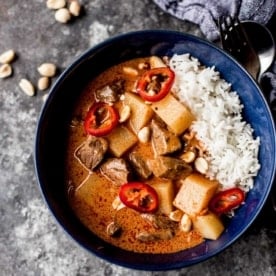
Thai Massaman Curry Paste
Equipment
- Skillet
- High Powered Blender or Food Processor
- Mortar and Pestle or Spice Grinder
Ingredients
- 8 large Dried Red Chili Peppers (preferably New Mexico or California dried peppers)
- 1 teaspoon Shrimp Paste (see note)
- 2 teaspoons Coriander Seeds
- 1 teaspoon Cumin Seeds
- 1/2 teaspoon White Peppercorns
- 1 teaspoon Salt
- 2 Tablespoons very thinly sliced Lemongrass
- 1 Tablespoon diced Galangal
- 1/4 cup diced Shallots
- 3 Tablespoons thinly sliced Garlic
- 1 teaspoon diced Cilantro Root (sub finely chopped cilantro stem if cilantro root is not available)
- 1 teaspoon Ground Cinnamon
- 1/2 teaspoon Ground Cloves
- 1/2 teaspoon Ground Cardamom
Instructions
- Use kitchen shears to chop chili peppers into large pieces (about 4 pieces per pepper). Shake the seeds out of the peppers (the more seeds you remove the less spicy the curry paste will be). Soak peppers in warm water for 10 minutes to soften.
- While peppers soak, place shrimp paste on a small piece of foil and then fold the foil up to form a packet that completely encloses the shrimp paste.
- Heat a skillet over medium-high heat. Place shrimp paste packet onto heated skillet and toast for about 2 to 3 minutes on each side, until fragrant. Set aside.
- Return skillet to medium-high heat and add coriander seeds, cumin seeds, and white peppercorns. Toast spices, stirring constantly, until fragrant, 4 to 5 minutes.
- Grind coriander seeds, cumin seeds, and white peppercorn using a mortar and pestle or spice grinder until they form a fine powder. Set ground spices aside. (Note: if you don’t have a mortar and pestle or a dedicated spice grinder, you can also pulse the dried spices in the blender or food processor, but it may take up to 10 minutes of blending / pulsing until a fine powder forms.)
- Return to dried peppers and drain off as much water as possible.
- If using a mortar and pestle:Combine soaked chili peppers and salt in a mortar and pestle and grind until smooth.Add lemongrass, galangal, shallots, garlic, and cilantro root. Grind again until smooth.Add shrimp paste and dried spices. Continue to grind / mix everything together until even. If using a blender or food processor:In a blender or food processor, combine chili peppers, lemongrass, galangal, shallots, garlic, cilantro root, and shrimp paste. Blend until the mixture forms a paste that still has a small amount of texture, pausing to scrape down the sides as needed. (Note: if the mixture does not blend easily, add water a bit at a time, as needed, to help it blend.)Add dried spices and salt and blend just until the spices are fully mixed in.
- Taste curry paste and season with some additional salt, if needed.
- Curry paste can be stored in the refrigerator for about 1 week or frozen for up to a year.
Notes
Nutrition
Nutrition information is automatically calculated, so should only be used as an approximation.

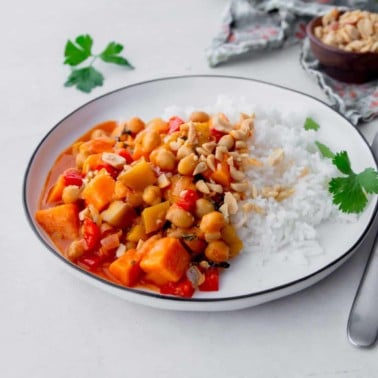

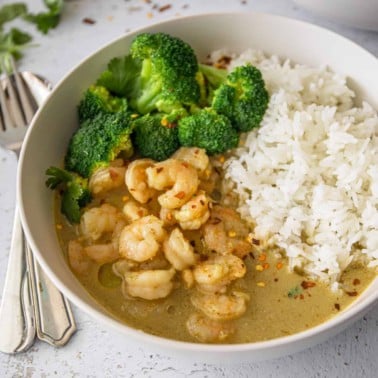
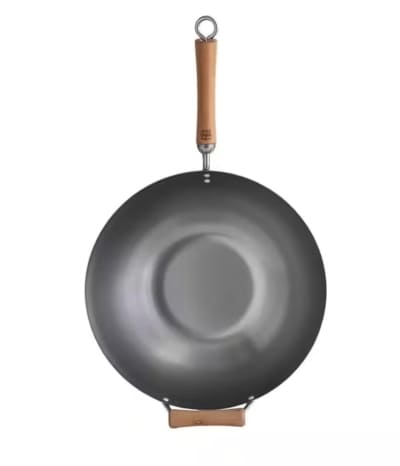
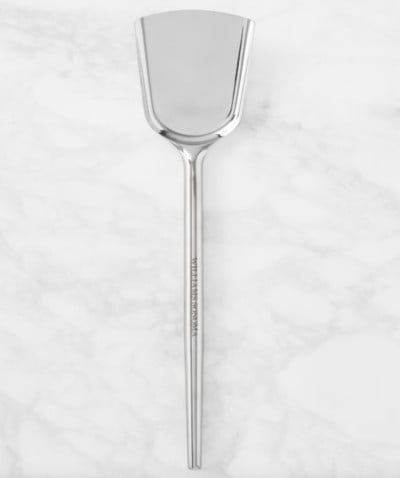
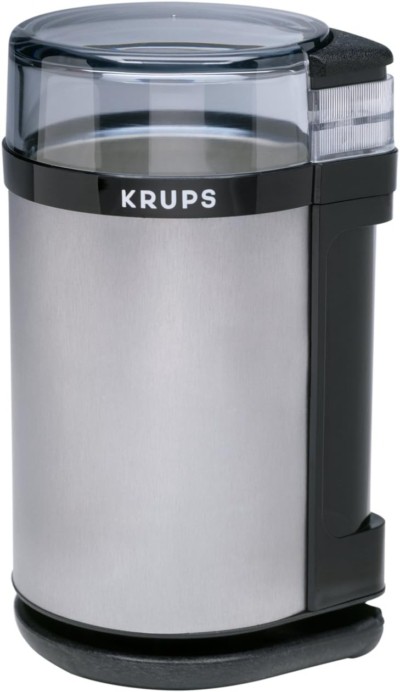
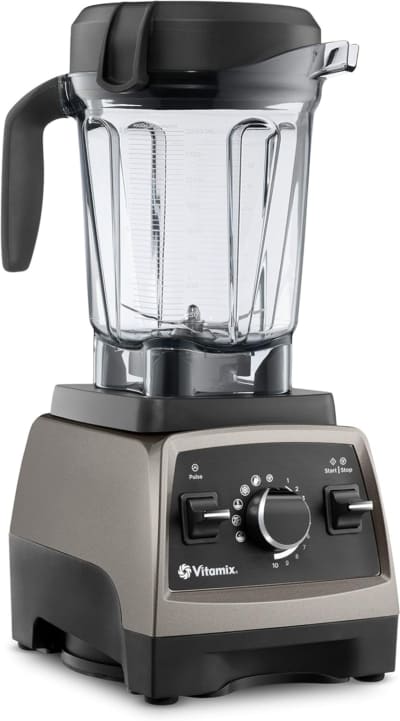
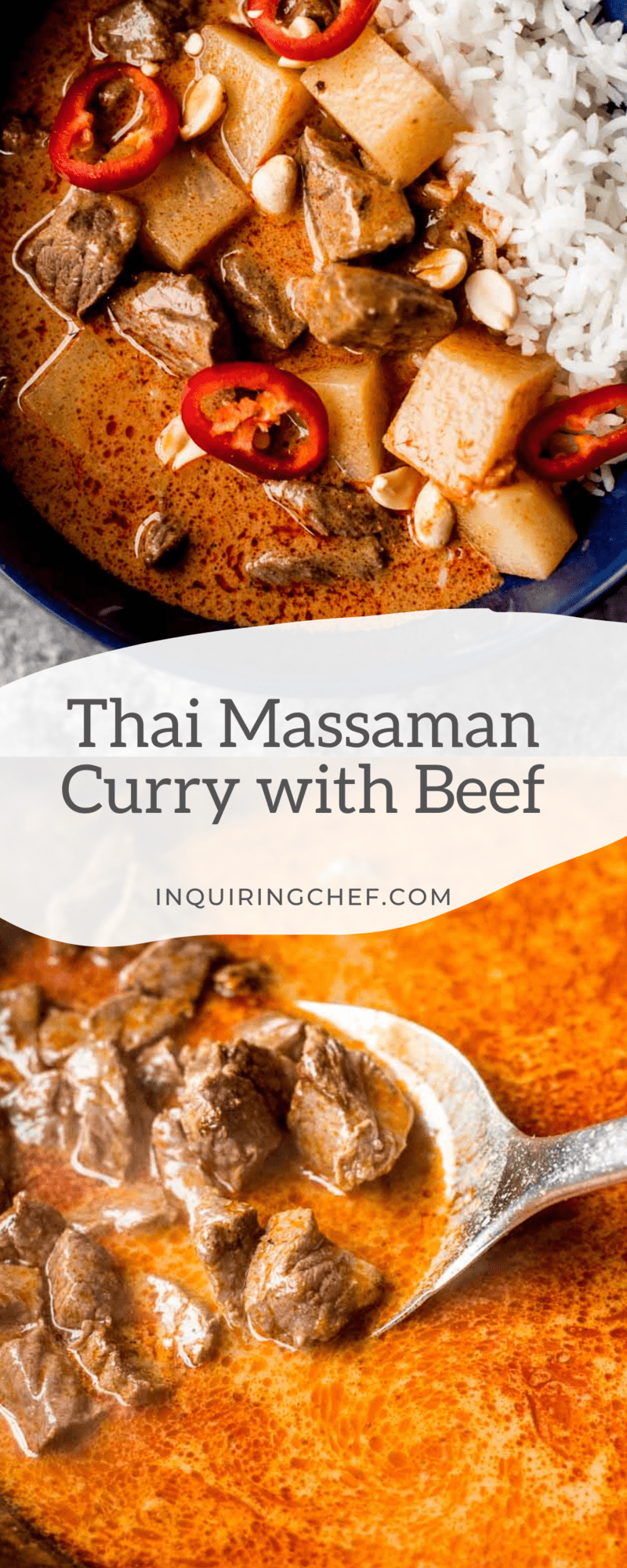
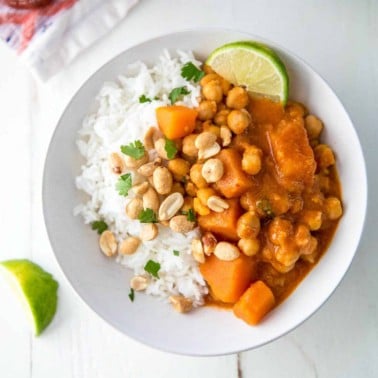
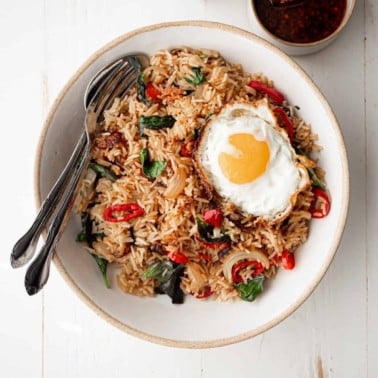
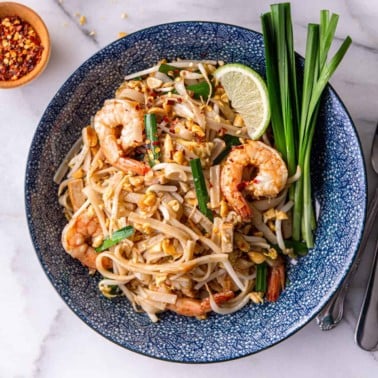









It will be great to have the Instant Pot version of this recipe. I’m trying this version tomorrow. Massaman Curry is my favorite of all the Thai currys.
I hope you enjoy it as much as we do!
Thank you for such an authentic, well researched and balanced recipe! Would you say that onions are not traditional in this curry?
That’s a great question, and I had to really dig through my memory of eating the dish in Thailand to remember. I don’t recall ever having a version that included onions because the base of the curry includes so many other key aromatics. But that certainly doesn’t mean that it isn’t sometimes made with onions. Thanks for making me think!
Will try it on the weekend